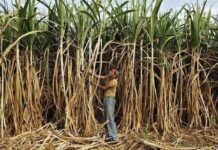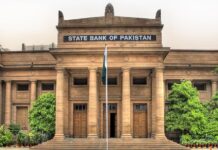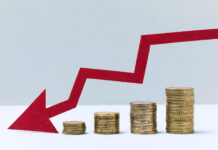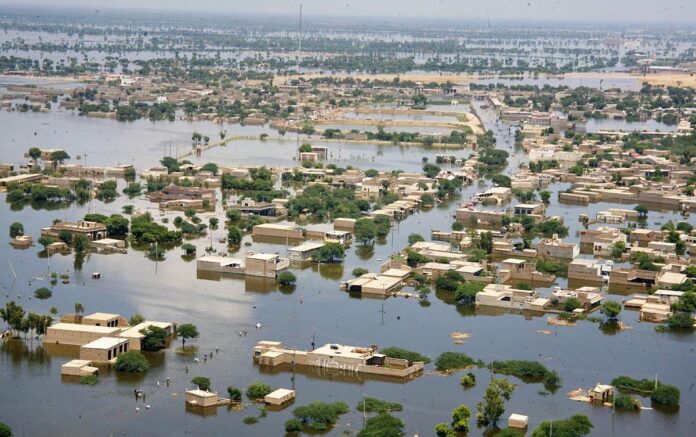Flood-related damages may add fiscal pressures on Pakistan’s economy and disrupt food supplies in affected areas, the Ministry of Finance said in its Monthly Update and Outlook for August 2025, released on Thursday.
According to the report, the Consumer Price Index (CPI) inflation remained moderate, suggesting that inflationary expectations were well-anchored through a mix of administrative measures, policy reforms, and prudent economic management.
Headline inflation was recorded at 4.1 percent on a Year-on-Year (YoY) basis in July 2025, compared to 3.2 percent in June 2025 and 11.1 percent in July 2024. On a Month-on-Month (MoM) basis, inflation increased by 2.9 percent, following a 0.2 percent increase in June 2025 and a 2.1 percent increase in July 2024.
The report added that inflation is projected to remain within the range of 4.0-5.0% in August 2025.
The national economy has entered Fiscal Year 2025-26 with positive momentum, building on last year’s gains and setting an optimistic tone for the period ahead, supported by a stronger external and fiscal position.
“Pakistan’s economy started FY2026 with positive developments from the sustained improvements in FY2025 and set a promising tone for the months ahead,” the report said.
Government measures for investment facilitation, along with reforms to support private sector-led growth, easing inflation, and accommodative monetary policy, are expected to further reinforce business confidence.
A favorable global environment, stronger demand from trading partners, and Pakistan’s recent trade deal with the U.S. are expected to boost exports, while workers’ remittances will help contain trade deficit pressures from tariff rationalization–driven imports.
Likewise, in July FY2026, the external sector showed favorable performance, with a narrower current account deficit and a stable exchange rate, while tax collection by the Federal Board of Revenue (FBR) recorded significant growth.
These trends highlight a stable macroeconomic foundation at the beginning of FY2026, the report says. It adds that the stability achieved in FY2025 and the sustained improvement in macroeconomic indicators prompted international credit rating agencies to upgrade Pakistan’s sovereign outlook, reaffirming confidence in the economic direction and reinforcing the credibility of ongoing reform efforts.
The report says agricultural credit disbursement rose by 16.3% to Rs 2,577.3 billion in FY2025, while agricultural machinery imports surged by 123.9% to $14.4 million in July FY2026.
The Large-Scale Manufacturing (LSM) sector registered a year-on-year (YoY) increase of 4.1 percent in June 2025, while on a month-on-month (MoM) basis, it declined by 3.7 percent. Cumulatively, LSM output declined by 0.74 percent during FY2025, compared to a marginal growth of 0.78 percent last year.
FY2025 concluded with notable improvements, supported by strong revenue growth and prudent expenditure control. The fiscal deficit narrowed to 5.4 percent of GDP from 6.9 percent in FY2024, the lowest in eight years.
The primary surplus rose significantly to Rs 2,719.4 billion (2.4% of GDP) from Rs 952.9 billion (0.9%), the highest in 24 years, driven by contained non-markup expenditures.
Total expenditure grew by 18.0 percent to Rs 24,165.5 billion, with current spending increasing by 15.9 percent to Rs 21,528.6 billion. This moderation created space for development, as the federal PSDP rose sharply by 43.3 percent.
On the revenue front, tax collection grew by 26.2 percent, while non-tax revenues surged by 65.7 percent. In July FY2026, FBR’s tax collection increased by 14.8 percent to Rs 757.4 billion, with a 12.5 percent increase in domestic tax and a 31.2 percent rise in customs duty.
In July FY2026, the current account posted a deficit of $254 million, lower than the $348 million deficit recorded in July FY2025. Goods exports increased by 16.2 percent to $2.7 billion, while imports rose by 11.8 percent to $5.4 billion, resulting in a trade deficit of $2.7 billion compared to $2.5 billion last year.
On July 30, 2025, the Monetary Policy Committee kept the policy rate unchanged at 11%, citing a slight uptick in the inflation outlook due to higher-than-expected energy price adjustments, despite favorable June inflation figures.
























